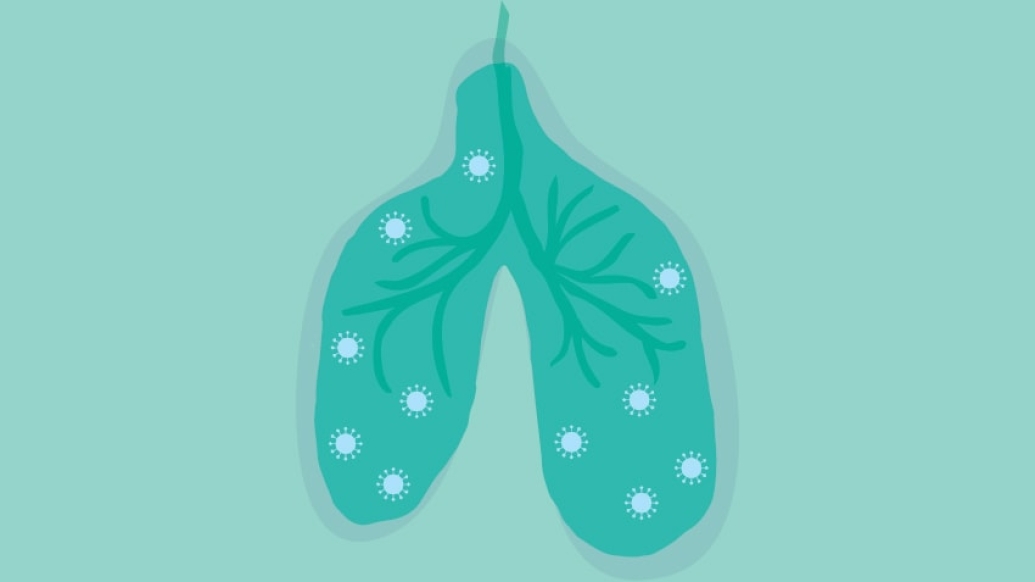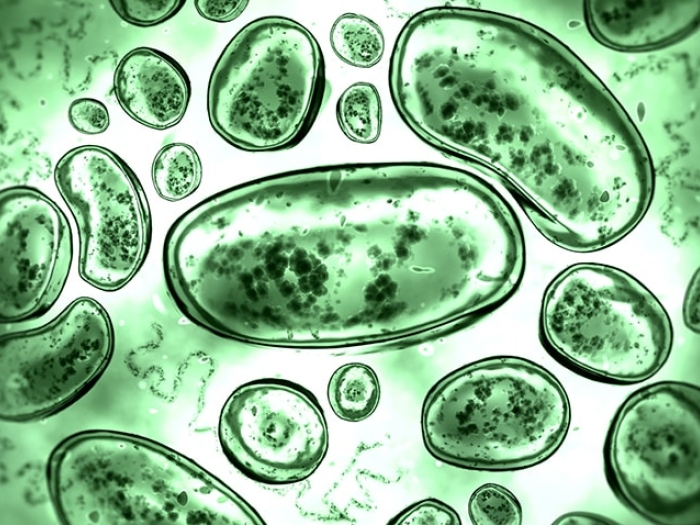While gut bacteria have been credited with boosting the body’s immune system, bacteria in the lungs may play a more direct role in protecting their own backyard.
7:00 AM
Author |

A bacterial community in your lungs doesn't sound like a good thing. But a new study in mice shows that bacteria in healthy lungs may play an important role in helping ward off disease.
ASK ALEXA: Add the Michigan Medicine News Break to Your Flash Briefing
Scientists are learning more every day about the connection between our health and the bacteria that make their homes inside our bodies. These bacteria, collectively known as the microbiome, appear to have a complex effect on health and disease. In fact, changes in our bacteria have even been linked to inflammatory lung diseases. For example, children who are exposed to antibiotics at an early age have an increased risk of developing asthma.
Until now, it has been thought that these effects stemmed from the so-called gut-lung axis — the indirect effects of intestinal bacteria on the lungs and the body's overall immune response. But the new research shows the lungs' own microbiome may have a more direct influence on lung immunity.
"In this experiment, we compared the variation we find in lung immunity with the variation we find in bacteria in both the gut and lungs," says lead author Robert Dickson, M.D., assistant professor of pulmonary and critical care medicine at Michigan Medicine. "We found that lung immunity more closely reflects lung bacteria than it does bacteria in the upper or lower GI tract."
"Bacteria in the lungs are more numerous and more complex than we ever appreciated," says Dickson. "This experiment shows that they're probably more immunologically important than we realized as well."
Dickson and his colleagues published their findings this month in a new paper published in American Journal of Respiratory and Critical Care Medicine.
We tend to think of the relationship between lung bacteria and lung immunity as 'off' or 'on'— either your immune system is asleep in health or it's revved up during infections. Our study suggests that it's much more of a continuum, even in health.Robert Dickson, M.D.
Lung vs. gut bacteria: An investigation
To tease out the effects of lung microbes compared with gut microbes on lung immunity, the research team looked at 40 healthy, genetically identical mice, comparing bacterial populations in their lungs, tongues and lower intestines.
MORE FROM THE LAB: Subscribe to our weekly newsletter
First, they confirmed that the mice indeed had naturally occurring bacteria in their lungs.
"Experimental contamination is a real problem in studies like this, so we have to be obsessive about confirming that the bacteria we find really come from the lungs," says Dickson. Dickson used novel, highly sensitive techniques to measure the bacterial DNA in the lungs and showed that it was not because of contamination.
The authors found that even though the mice were genetically identical to each other, the bacteria in their lungs varied greatly. In fact, this variation in lung bacteria could be one of the reasons behind problems with reproducing experiments in mice. "We've known for a while that our laboratory mice vary in their gut bacteria," says Dickson. "This experiment shows that lung bacteria are just as variable, and this variation seems to have consequences for lung immunity."
While the link between antibiotics and inflammatory lung disease has been blamed on the drugs' effect on gut bacteria, Dickson wondered if these drugs could also affect the bacteria in healthy lungs. To find out, his team exposed the healthy mice to a commonly used antibiotic, ceftriaxone. As they suspected, the antibiotics changed the lung microbiome. "The longer the mice received the antibiotics, the more altered their lung bacteria were," says Dickson. "And the shifts we saw in lung communities were in the direction we predicted based on antibiotics we used."
Because antibiotics affect both gut and lung bacteria, "we can't just assume it's due to a gut-lung axis," Dickson adds. "It's possible that it's disruption of the lung microbiome that really matters."
After confirming that the lung microbiome exists and can be altered by the environment and antibiotics in healthy mice, Dickson and his team looked for a link between the bacteria and the lungs' immune state. Innate immunity is the first line of defense against infection. When cells in the lungs detect a potential pathogen, messenger molecules called cytokines are activated, letting the immune system know it's time to respond to a threat.
SEE ALSO: Discovery of Gut Bacteria in Critically Ill Lungs May Change ICU Care
One way of determining the strength of lung immunity is to measure the amount of cytokines present. One cytokine, interleukin 1-alpha (IL-1α), is a key driver of innate immunity. The presence of IL-1α can indicate inflammation. The team compared the amount of IL-1α and the microbiota in each mouse's gut and lungs. They found that lung levels of IL-1α were tightly correlated with the diversity of lung bacteria, but had no relation with the diversity of gut bacteria. This suggests that when it comes to adjusting the lungs' immune response, lung bugs matter more than gut bugs.
Dickson notes, "We tend to think of the relationship between lung bacteria and lung immunity as 'off' or 'on' — either your immune system is asleep in health, or it's revved up during infections.
"Our study suggests that it's much more of a continuum, even in health. It would make sense that the lung's immune cells are constantly doing surveillance, dialing their response up or down according to what bugs they are seeing."
Dickson's study opens new doors for looking at the role of bacteria in healthy lungs. This underappreciated community of microbes could offer more insight into how bacteria contribute to health and disease.

Explore a variety of healthcare news & stories by visiting the Health Lab home page for more articles.

Department of Communication at Michigan Medicine
Want top health & research news weekly? Sign up for Health Lab’s newsletters today!





